2023 Bloomington primary notebook: Breaking down a citywide council race: 7 candidates, 3 seats
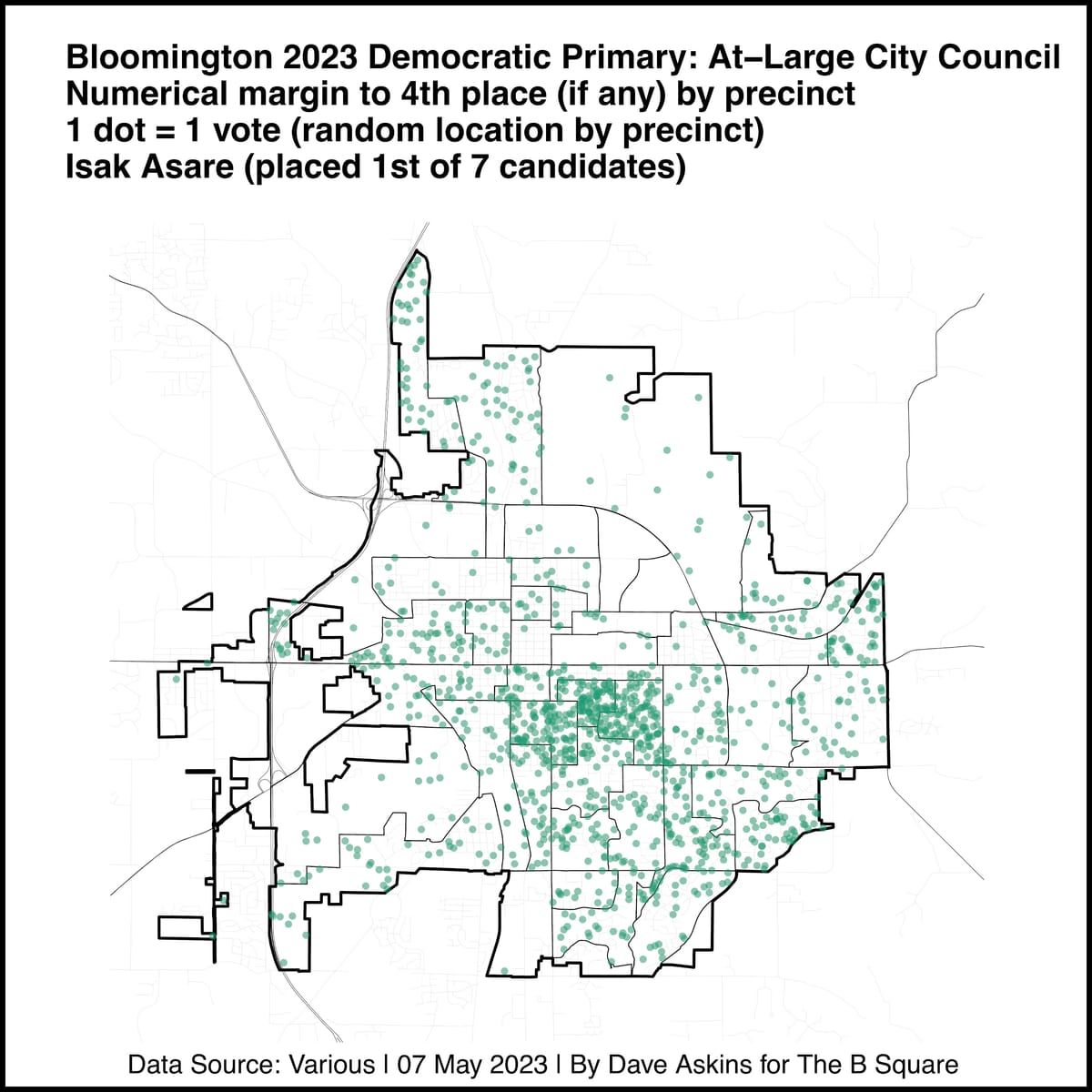
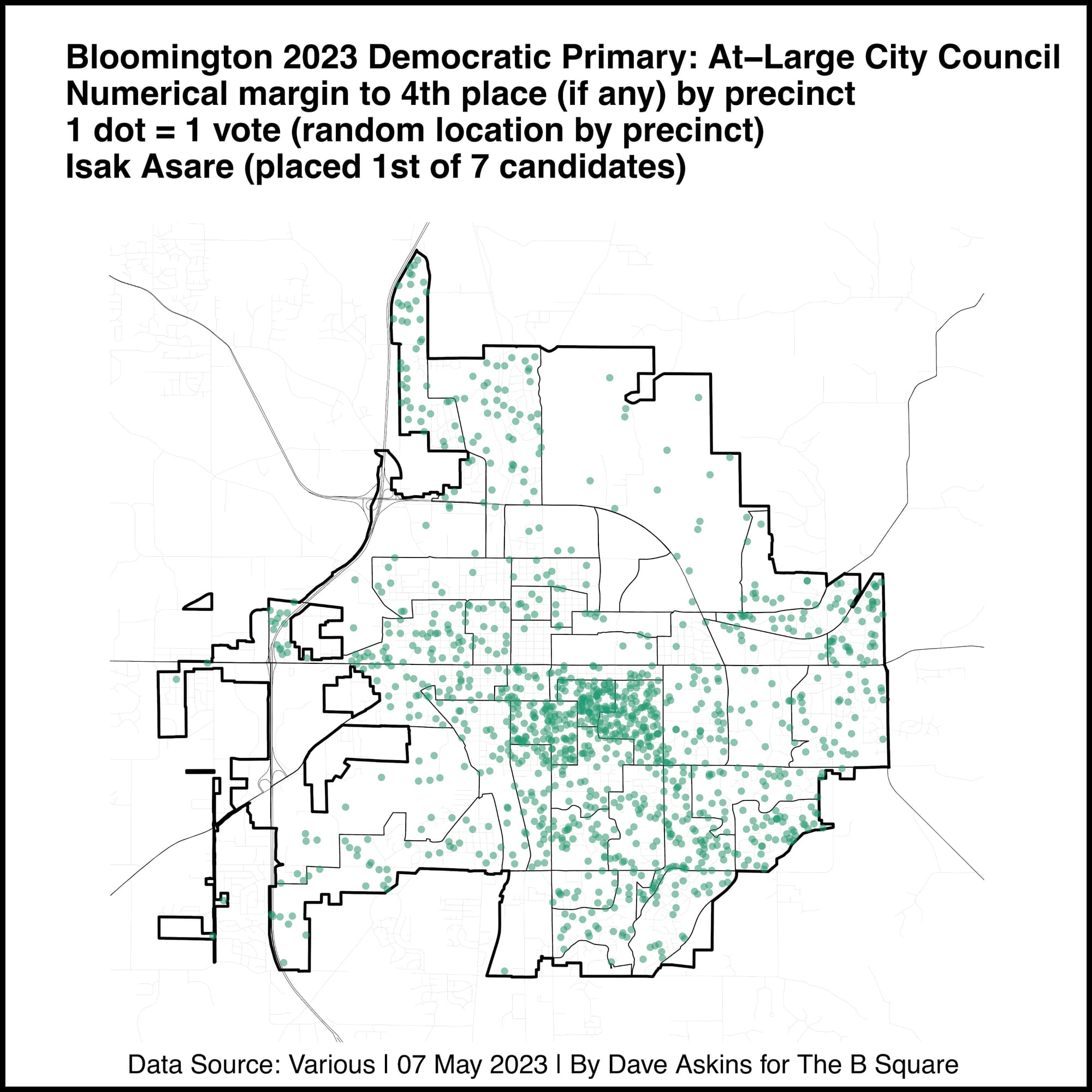
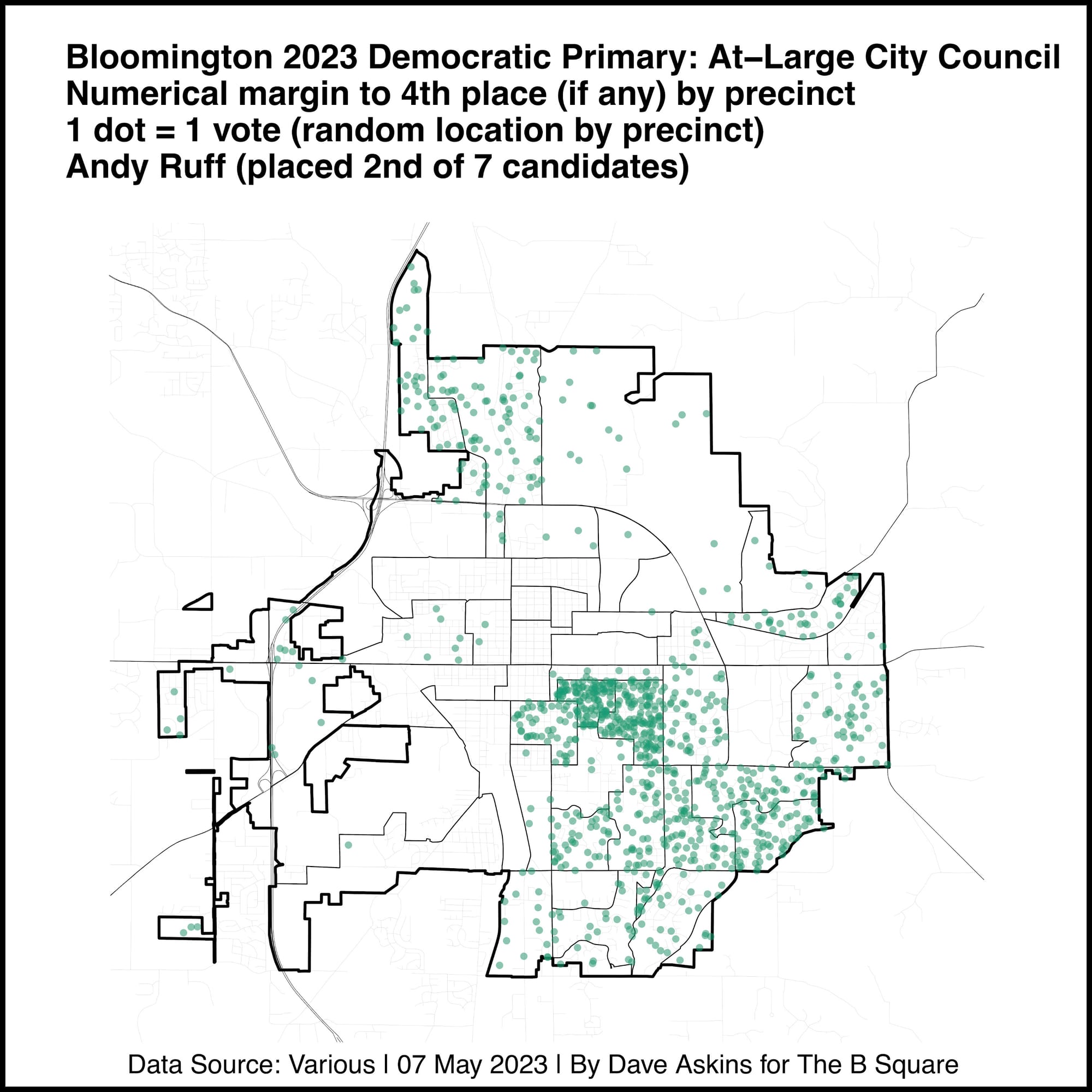
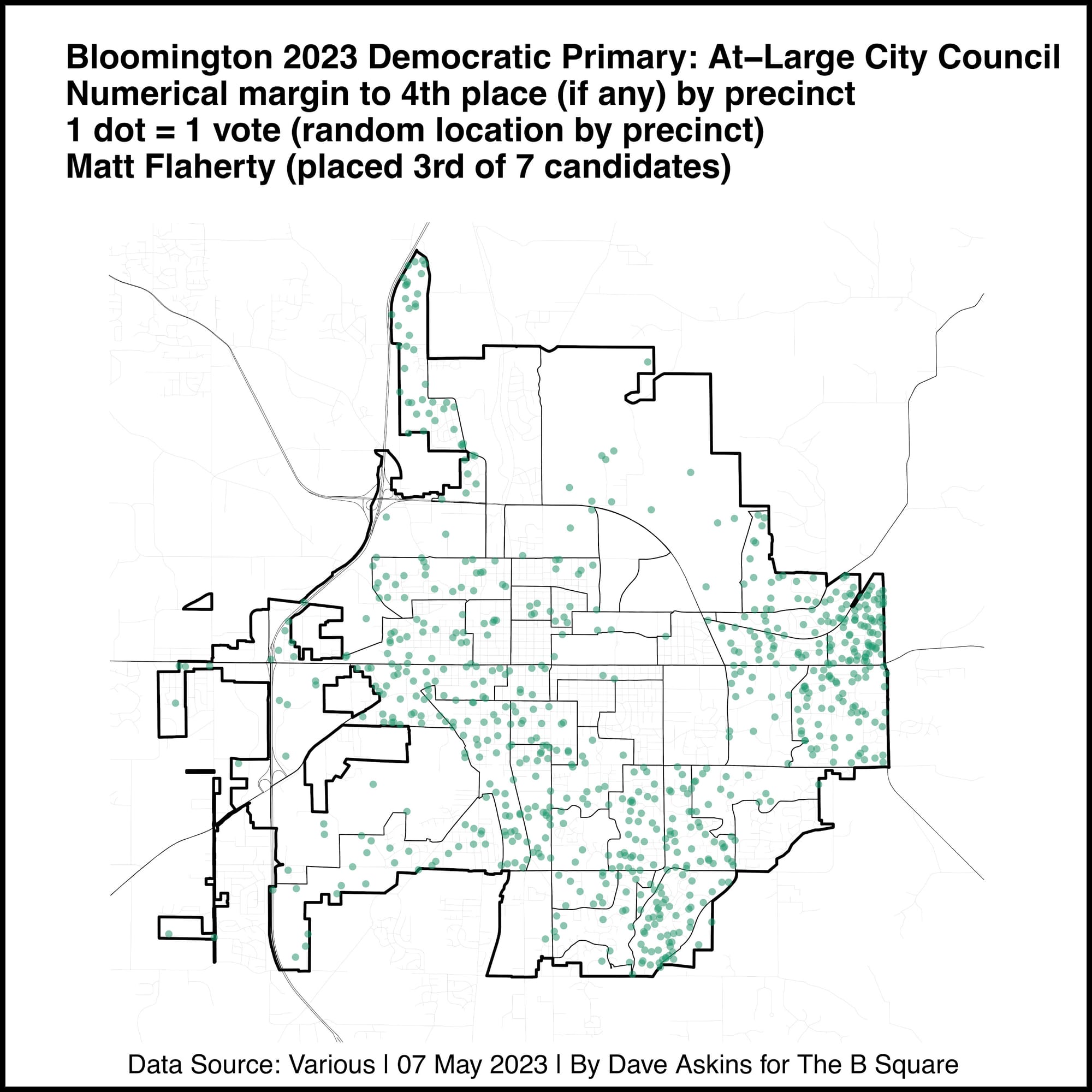
On Tuesday, three candidates won the Democratic Party’s nominations for at-large seats on the Bloomington city council: Isak Asare, Andy Ruff, and Matt Flaherty.
There were four other candidates on the ballot: Lois Sabo-Skelton, Jonas Schrodt, Steve Volan and Ryne Shadday.
Asare is a newcomer to city council politics. Ruff is making a comeback, after missing out on his re-election bid in 2019. Flaherty is an incumbent, who helped displace Ruff from his at-large seat in 2019.
At-large seats are elected by voters citywide—unlike district seats, which are elected by voters in one of six geographic districts. The at-large seats aren’t labeled in any way—that is, an at-large candidate doesn’t declare a run for some particular at-large seat.
On Tuesday, voters picked up to three at-large candidates from the seven on the ballot. It’s the top three vote-getters who won nomination to stand for the Nov. 7 general city election.
The top vote-getter was Asare (4,194 votes), followed by Ruff (3,961 votes), then Flaherty (3,726 votes).
One notable fact about the at-large city council election results is the clear break between the top three vote-getters and the rest of the seven-person field. Numerically, the gap between first and second place was 233 votes. The gap between second and third place was about the same: 235 votes.
But the difference between third and fourth place was almost four times as big: 874 votes.
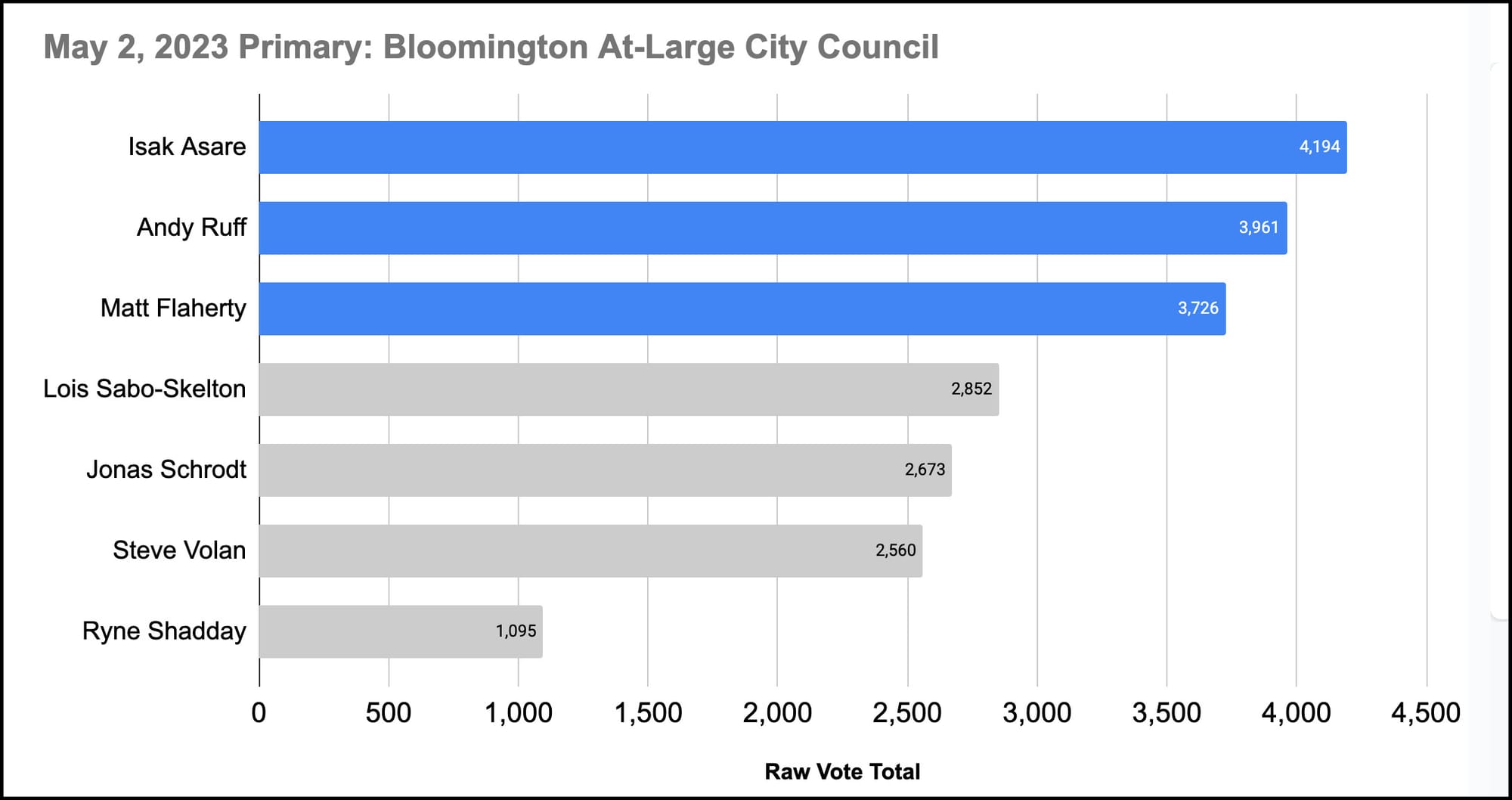
Describing those gaps based on percentages is a little tricky.
Why is reporting on percentages for pick-any-three election results a little bit challenging? It’s because the percentages that are typically calculated for such races use as a denominator the number of votes cast—just like pick-only-one type races. For pick-only-one type races (for example, council district seats, mayor, and clerk), a candidate’s percentage of votes cast also tracks close to the percentage of voters who picked that candidate.
That’s not so, for at-large races. For example, a three-way pick-any-three race where every voter picks all three candidates would show each candidate receiving 33 percent of votes, when in fact 100 percent of voters chose each candidate.
The percent of voters who picked the candidate is probably a more useful gauge of a candidate’s popularity. To get that number for the at-large city council race, The B Square used the number of ballots cast as the denominator. The number of ballots cast was 8,045.
A majority of voters, 52.1 percent to be exact, made Asare one of their three choices. Ruff received about 2.9 percentage points less, at 49.2 percent.
Another 2.9 points back was Flaherty, with 46.3 percent. But the gap from Flaherty to fourth place finisher Lois Sabo-Skelton, who was marked on 35 percent of ballots, was about 11 points.
In the 2019 Democratic Party primary, Susan Sandberg was the top vote getter in the six-way at-large city council race that year. Sandberg received 2,994 votes, on a total of 5,392 ballots cast, which is 55 percent.
| Candidate | Votes | Percent of Votes | Percent of Ballots |
| Isak Asare | 4,194 | 19.91% | 52.13% |
| Andy Ruff | 3,961 | 18.81% | 49.24% |
| Matt Flaherty | 3,726 | 17.69% | 46.31% |
| Lois Sabo-Skelton | 2,852 | 13.54% | 35.45% |
| Jonas Schrodt | 2,673 | 12.69% | 33.23% |
| Steve Volan | 2,560 | 12.16% | 31.82% |
| Ryne Shadday | 1,095 | 5.20% | 13.61% |
To analyze the geographic patterns in this year’s at-large city council race, The B Square first calculated the margin, if any, between each candidate and the fourth place finisher in each precinct. If the difference between a candidate and the fourth place finisher is a positive number, that means the candidate was in the top three for that precinct.
The B Square plotted each candidate’s positive margin to fourth place in each precinct as a number of dots in that precinct—one dot per vote, in a random location inside the precinct.
Those plots show stronger support for Ruff in the center and the southeast of the city. Flaherty’s support was more even than Ruff’s outside of the city’s center, but missed support in the center.
Despite placing third behind Ruff, Flaherty was among the top three in 38 of the city’s 47 precincts, compared to Ruff’s top-three finishes in 32 precincts.
Asare’s support looks evenly strong in the center, as well as in other parts of the city. Asare was a top-three finisher in 43 of the city’s 47 precincts.
Right now, there are no declared Republican candidates for an at-large seat and there aren’t any known residents who are trying to collect the required 352 signatures to run as an unaffiliated at-large candidate.
So the Democratic Party’s nominees from Tuesday will likely win election to the 2024 edition of the Bloomington city council.
[Note: For readers who’d like to have the precinct-by-precinct election results in analyzable form, here’s a link: [Shared Google Sheet of 2023 Bloomington Primary Results] The flat table in the spreadsheet was provided by Bloomington resident Eric Ost, who worked from the unofficial results released by the Monroe County clerk’s office. For readers who are looking for a meaningful sample dataset to use, to learn something about how to use spreadsheets, here’s a good way to start with the Google Shared Spreadsheet: Make a pivot table with “Contest” and “Candidate” selected as Rows, and the sum of “Total Votes” selected as Values.]







Comments ()